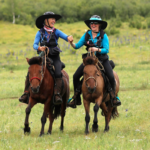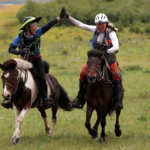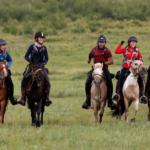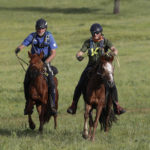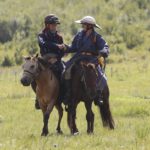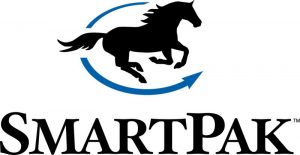 In August 2017 writer/rider Leslie Wylie conquered her most fearsome feat of #YOLO yet: a 620-mile race across Mongolia. Riding 27 semi-wild native horses. Carrying only 11 pounds of gear. Relying on nomads for food, water and shelter. On a mission to help stop deforestation.
In August 2017 writer/rider Leslie Wylie conquered her most fearsome feat of #YOLO yet: a 620-mile race across Mongolia. Riding 27 semi-wild native horses. Carrying only 11 pounds of gear. Relying on nomads for food, water and shelter. On a mission to help stop deforestation.
Held Aug. 9-19, the Mongol Derby is widely regarded as the toughest horse race in the world. Inspired by the Genghis Khan’s original “pony express,” there’s no trail or set route, just 25 GPS checkpoints/horse exchange stations to hit over the course of 7-10 days. Now that Leslie is home she is recapping her ride of a lifetime! Click here to read previous stories in the series.
“Only the wild ones give you something and never want it back.”
– Dispatch, by way of my Derby forever friend Amanda Charlton Herbert
Day 5
Day 5 was when things started getting a little … blurry. Not because I was concussed (knock on wood) or tipsy on fermented mare’s milk (it’s not as gross as you think!) but because of the repetition: Ride. Rinse. Repeat. Except for the rinsing part, of course. We just kept getting filthier and filthier.
By mid-race I smelled like a cross between a rancid watermelon and a homeless man. The eau de rotten fruit was from electrolyte powder I used to cut the goat taste of the water, but since my hydration pack started leaking I was getting more of it down my shirt than down my throat. The subway-bum-who-peed-himself scent was from, well, actually peeing myself. It was a sad moment in my life — I went to pop a squat and my legs were so stiff they literally wouldn’t bend — but, as any Derby rider who has been dealt the nightmare hand of diarrhea can surely attest, it could have been much worse.
“Coulda been worse!” I don’t know how many times those words came out of my mouth during the race. So what if I spent the first night of the Derby swatting mice away from my face, or if I felt like a human popsicle on day 2, or if a horse galloped into the sunset with all my stuff on day 3, or if I got bucked off and had to walk 13 miles on foot on day 4. Cue the tiny violins. Whatever drama I was going through out there, ultimately it was all relative. At least I wasn’t in a hospital bed back in Ulaanbaatar. I was lucky. I was still in the race.
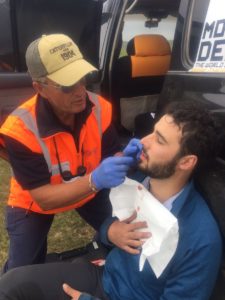
Pierre getting stitched up on day 1. Photo courtesy of the Mongol Derby.
The North American contingent was having a tough go of it, with about half our riders knocked out by the midpoint. Julia from South Carolina broke a rib on day 1. Rick from Wyoming succumbed to hypothermia on day 2. Marianne from North Carolina shattered her collarbone on day 4. Liv, my teflon-coated Canadian training buddy, valiantly rode on with a badly sprained ankle only to injure her back in another crushing fall on day 5. Pierre from Maryland was hard-headed enough to take a hoof to the head on day 1 but met his match in a concussion on day 6.
The growing pileup of accidents had me rattled. Who knew when any of our numbers were up? Things could go south no matter how carefully you played your cards, and it always seemed to happen when you least expected it.
For example: It was the third leg of the day, and I was tagging along with South Carolina endurance riders Clare and Rachel. We were ascending another epic, green velvet covered ridge that seemed to go up and up forever. It felt like we were on a roller coaster, chugging toward the summit and wondering what lie on the other side.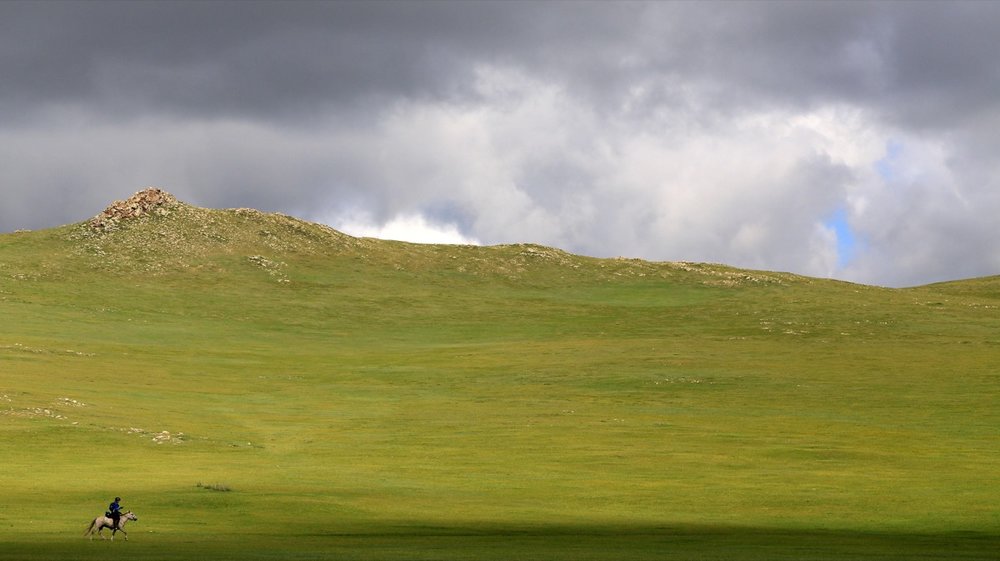 Photo by Julian Herbert/Mongol Derby.
Photo by Julian Herbert/Mongol Derby.
Finally we crested the top. But before we could gasp at the breathtaking panoramic vista, something else took our breath away: a massive golden eagle rising up out of the grass directly in front of us.
It was majestic and terrifying and the most ridiculously Mongolian thing I’d seen in my life.
You guys, this wasn’t just a bird. It had a wingspan the length of a horse, talons that could snatch up a toddler, and a look on its face like Vladimir Putin losing a golf match to Donald Trump. (Derby fun fact: At one point during the race we were only about 100 kilometers from the Russian border.)
To our horses, of course, it was mostly just plain terrifying. All three made their own personal “fight or flight” choices, the flightiest being Clare’s horse who promptly dumped her and took off galloping.
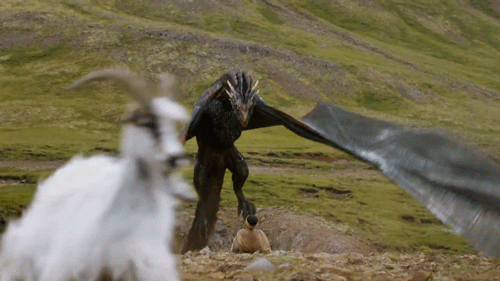 Clare’s horse was the goat in this scene from “Game of Thrones,” basically.
Clare’s horse was the goat in this scene from “Game of Thrones,” basically.
Fortunately, it was a best case scenario sort of fall. Clare was fine, the horse soon realized it had no real game plan and stopped to graze, and we all continued on, enjoying a good belly laugh about the incident later. I mean, could it get any more Mongol Derby than that?
Days 6-8
After my solo sojourns during the first few days, I recommitted to honoring the promise I made my husband before the race but had already broken by the second leg: that I wouldn’t ride alone.
To be fair, cruising through the race by oneself has its perks, in that you maintain sole jurisdiction about decisions like direction/speed and you’re not beholden to waiting up for anyone should they draw a slow horse or find themselves in a jam. The caveat: When things go wrong for you, and they will, there’ll be no one around to scrape you up off the dirt. And also, when singing “99 Bottles of Airag on the Wall” on repeat to stave off boredom quits working, you might lose your mind.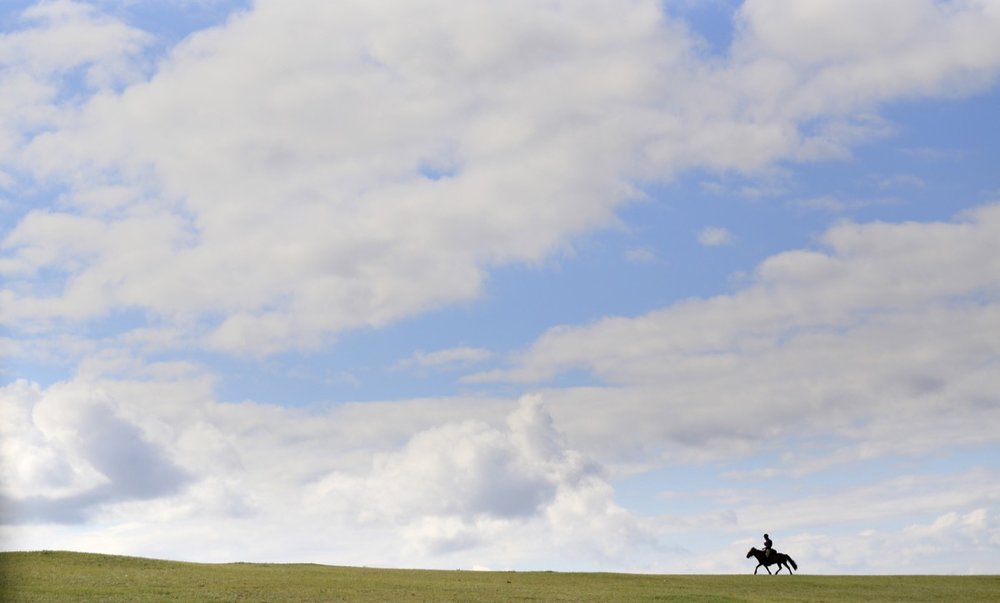 Tiny human, big world. Photo by Julian Herbert/Mongol Derby.
Tiny human, big world. Photo by Julian Herbert/Mongol Derby.
Both in weird horse race situations and life in general, the company you keep can make all the difference. As a rule I’m not a person who needs people around me all the time. I can be the life of the party but I also value solitude; I have wonderful close relationships but I also pride myself on independence — to the point where it’s sometimes hard to admit that I can’t do something alone.
By halfway through the Derby, though, I knew that I couldn’t do it alone. The back row of the strugglebus is a lonely place to be. Especially when it’s doing this.
Especially when it’s doing this.
The physical part was easy to understand. Go ride a horse at speed for 13 hours straight and tell me how you feel. The answer, I don’t care how fit or skilled you are, is: You feel like crap. And then you’ve to get up the next day and do it again. And again. And again and again and again and again and again and again. At night the gers resembled opium dens as riders swapped painkillers, winced at one another’s battle wounds, and shared stranger-than-fiction war stories from the day.
The psychological wear and tear was the piece I hadn’t anticipated.
The Mongol Derby has a funny way of dredging up whatever your weaknesses are and throwing you in the ring with them, boxer style, to duke it out. It’s literally you-vs.-you out there. And like some tour de kryptonite, I went head-to-head with every last one of my demons on the steppe.
Don’t get me wrong: When it comes to navigating life, I have a pretty decent skill-set. I’m good with people. Animals like me. I make a mean jell-o shot. I have a large vocabulary. I have a history of accomplishing whatever I set my mind to, not because I’m a particularly gifted human being but because I’m just really freaking stubborn.
Things that I am NOT good at:
- Feeling vulnerable.
- Admitting that I’m not OK.
- Asking for help.
- Failing.
In almost every one of the Derby photos, I am smiling. Here’s a secret, though: They weren’t all equal. Sometimes I was smiling because the world was, literally and metaphorically, blowing my hair back. The generosity of the herding families, the spirit of the horses, the otherworldliness of the landscapes … my life had never felt so vast, so technicolor, so intense.
Other times, I was smiling because I felt like my world was spinning off its axis. Even if it was just my facial expression, at least I could be in control of something.
I started having panic attacks each morning upon waking. Not recognizing where I was, or why I was there, or who was the person sleeping beside me. Chest tight, body deflated, all the air sucked out. I couldn’t breath or move. And then, like a picture slowly coming back into focus, remembering what lie ahead of me. Another day of feeling more vulnerable than I’d ever felt in my life. At the end of it would I find myself in a ger? A medevac? I focused on moving the air in and out of my lungs while the riders around me rustled in their sleeping bags, forging their own reentries into the strange dream that had become our waking life. Horse herders head out at daybreak to round up our horses. Photo by Julian Herbert/Mongol Derby.
Horse herders head out at daybreak to round up our horses. Photo by Julian Herbert/Mongol Derby.
A gang of seven of us were running at about the same speed and had been ending up at the same horse stations at the end of each day. There was Cy, Paul and James from Britain, Lucy from Australia, and fellow Americans Taylor and Amanda. I was inspired by all of them, not only because of their physical toughness — Cy had been riding with a broken rib since day three, and Lucy’s arm looked like a swollen black-and-blue balloon animal from a fall on day five — but because of their attitudes.
Someone was always laughing about something and that little spark of joy kept cycling from one person to the next, as though we were passing it around in a flask. We shared our stories and talked about what we missed most about home. We kept one another motivated — “I think I see a glass of wine on that mountaintop!” — and entertained ourselves with cowboys-and-Indians sneak attacks. We chased rainbows across landscapes so beautiful it made you want to cry. We paused at ancient shamanic sites, took scenic detours and made sure to never lose our sense of wonder. It felt like we were pulling one another along toward the finish, sometimes literally, like when Paul drew a slowpoke and James had to pony it off his own horse for half a leg.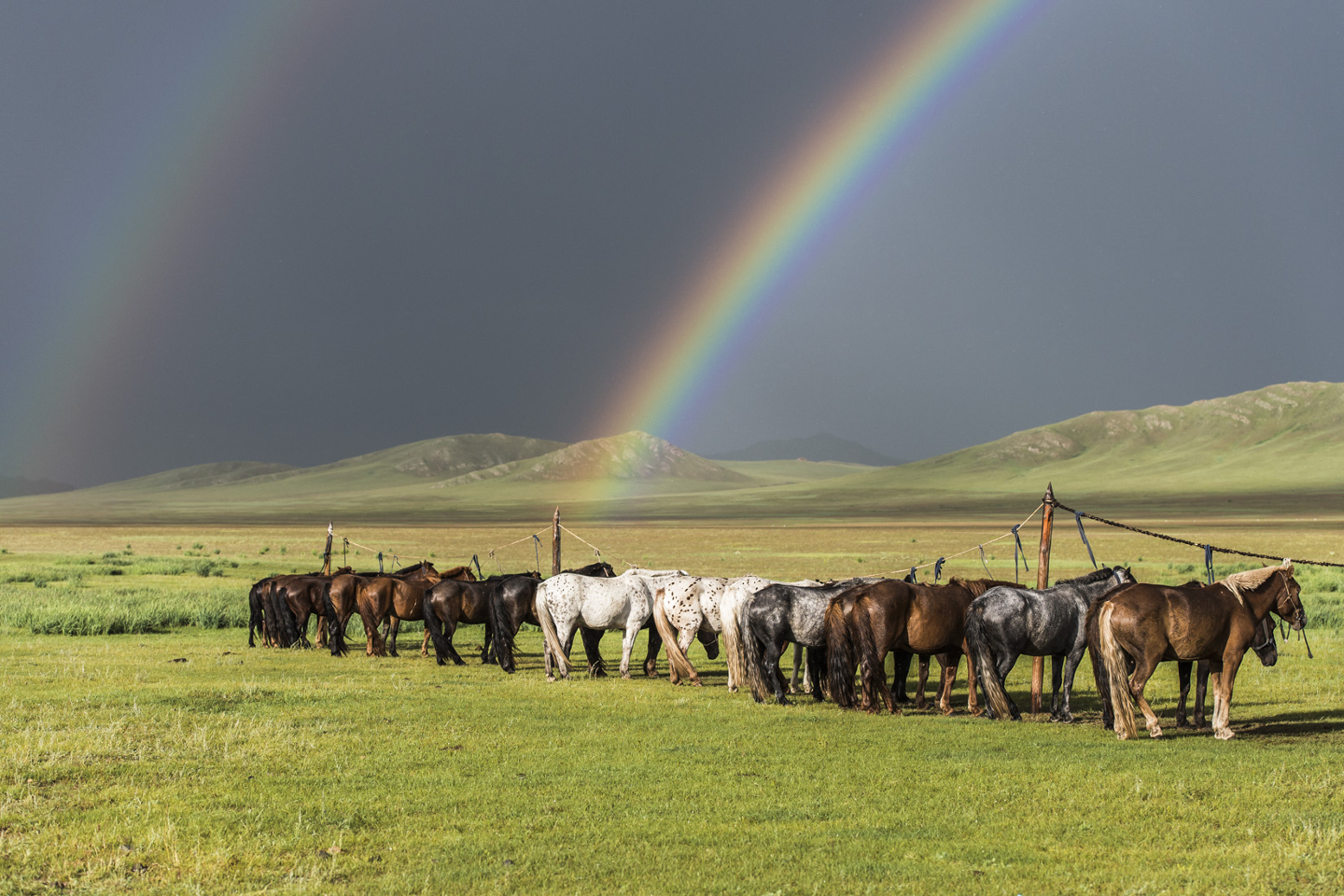 Seriously, there were so many rainbows. Photo by Julian Herbert/Mongol Derby.
Seriously, there were so many rainbows. Photo by Julian Herbert/Mongol Derby.
Some neat drone footage from Erik Cooper:
In particular I hit it off with Taylor and Amanda. I liked the determined yet steady and safe way they were riding the race, in contrast to my own erratic track record of fits and starts, hits and misses, feats of bravado interspersed with anxiety attacks. Left to my own devices, I knew I’d end up toast. It wasn’t until I teamed up with Taylor and Amanda that I could imagine myself, with clarity, playing the long game and making it to the finish.
You can do anything for nine days, I constantly reminded myself, except hold your breath underwater.
I also appreciated the way they handled crisis situations, which just kept coming. Someone’s horse was always falling down, or we were dodging cloud-to-ground lightning, or finding ourselves belly-deep in a bog.
The scariest was when Taylor’s horse fell in a marmot hole and, by some fluke of hill slope and saddle bag, got stuck upside down like a turtle on its back. It was a rigor mortis-esque pose: four legs in the air, neck twisted around at an unnatural angle, and mouth gaping wide open as the reins were caught beneath him. Unable to move, his eyes were wide and glazing over in shock. Taylor scrambled out from beneath him and went to work trying to get the horse free, which she somehow managed.
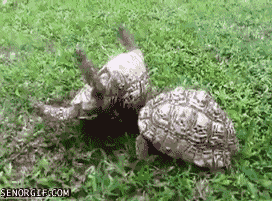 Teamwork makes the dream work.
Teamwork makes the dream work.
Panic is a perfectly natural physiological responses to stress, but it’s not necessarily productive when it comes to getting you out of a bad spot. Moments like these now felt like out-of-body experiences. You could feel your mind stepping outside your body, calmly evaluating the situation, collecting information and formulating a plan of action. And then stepping back into your skin and executing the plan.
It’s amazing what humans can adapt to. How quickly our definitions of normal can shift. The Mongol Derby doesn’t follow a template, and neither does life. You just figure it out. You find a way to survive.
Day 9
The homestretch.
At 6:05 p.m. local time, after one last day of physical and mental assault, I crossed the finish line alongside four of the toughest, most inspiring horsemen and women I’ve ever met.
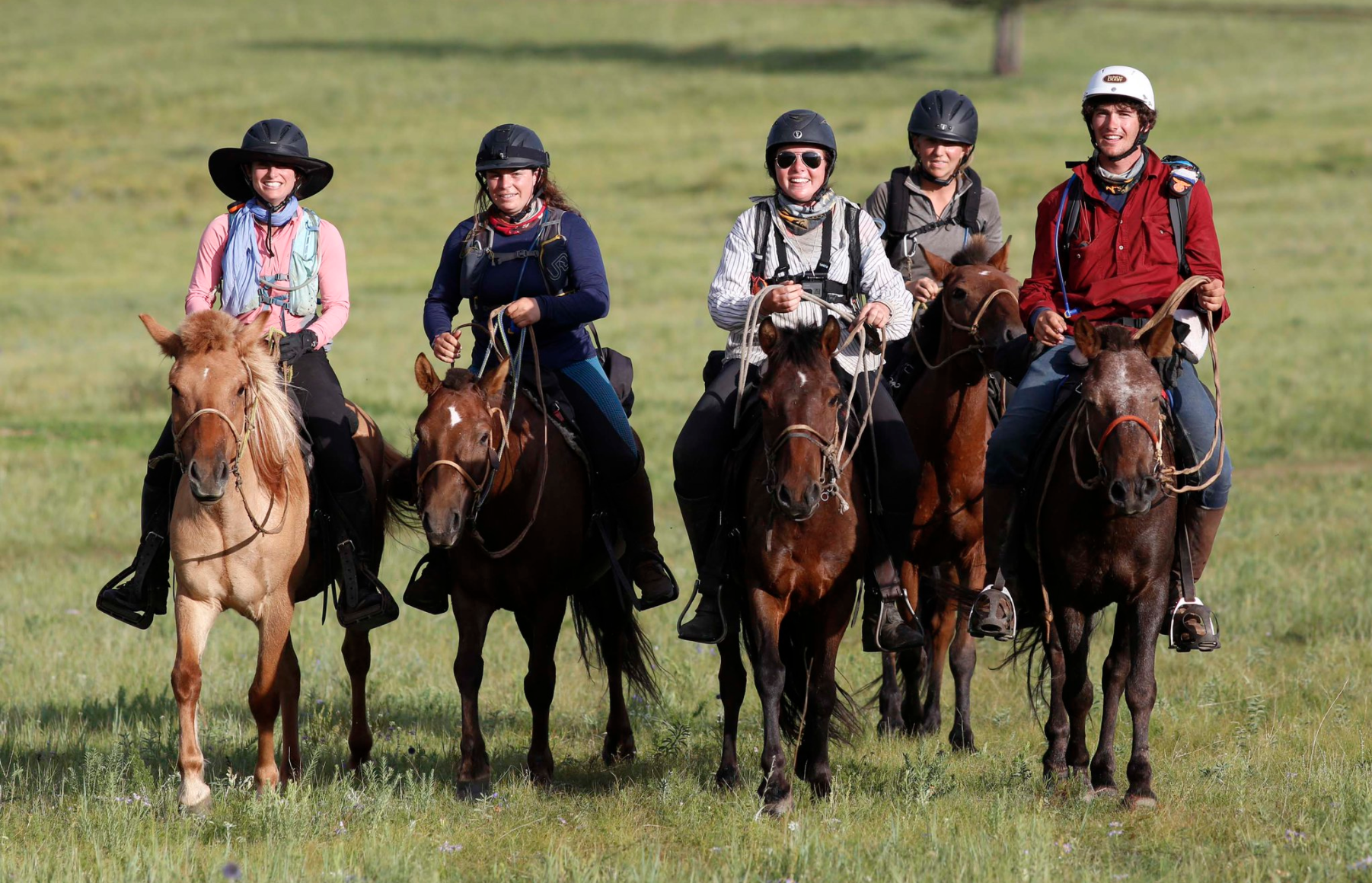 Couldn’t have done it without these guys. Photo courtesy of the Mongol Derby.
Couldn’t have done it without these guys. Photo courtesy of the Mongol Derby.
A funny thing about the Derby is the fact that, whatever your competitive intentions may be when you start the race, almost nobody finishes alone. This year we saw another joint winner in Ed Fernon, the Olympic pentathlete from Australia, and Barry Armitage, for whom 2017 was his third crack at the Derby and first win. I rode up top with both these cool but cutthroat guys at the beginning of my race (the “business up front” portion, if you will), and I never would have pegged them for the types who would team up and, on a gentleman’s handshake, share the victory.
The Derby changes everyone.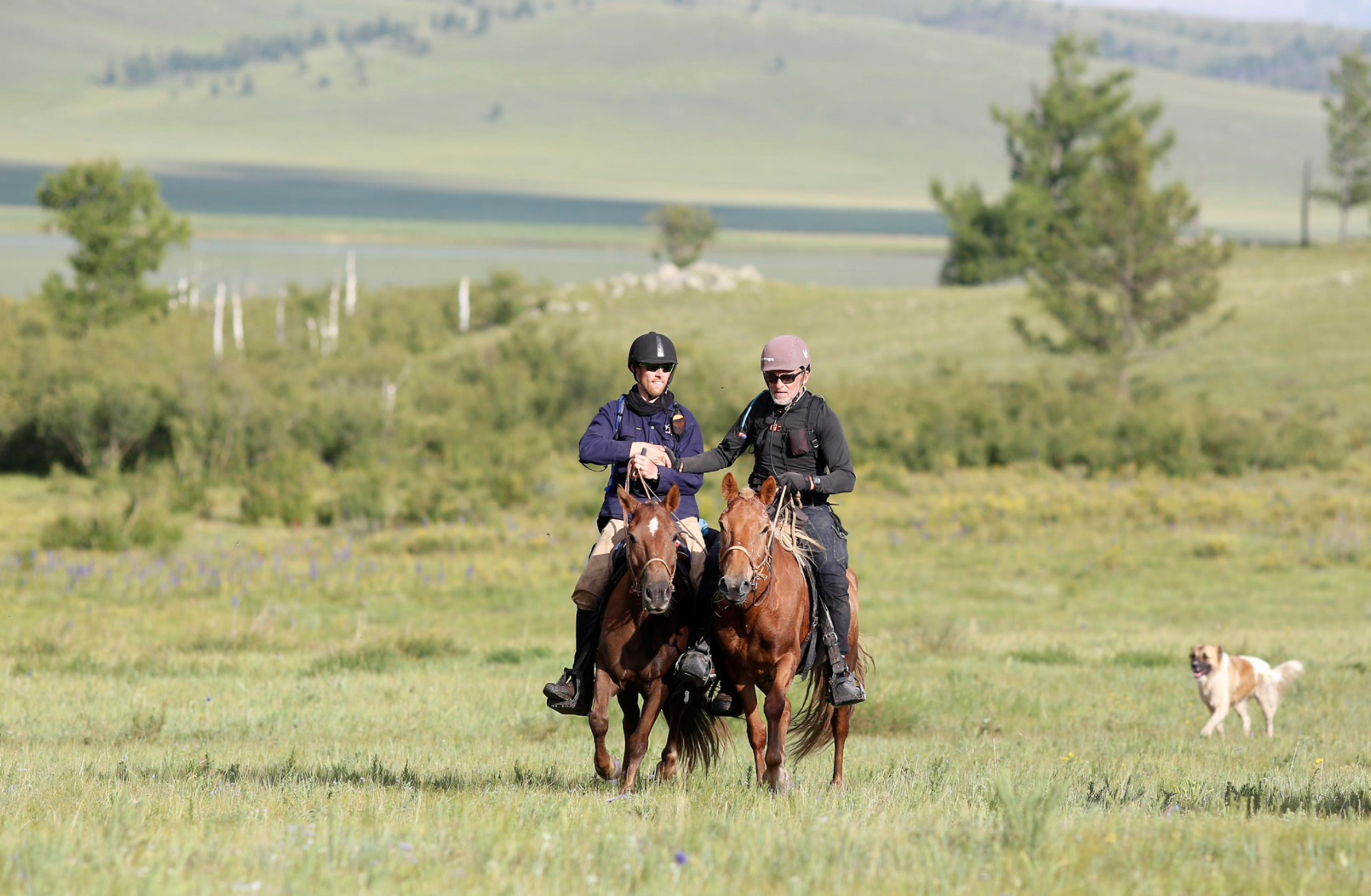 Ed Fernon and Barry Armitage, joint winners, approaching the finish line. Photo by Julian Herbert/Mongol Derby.
Ed Fernon and Barry Armitage, joint winners, approaching the finish line. Photo by Julian Herbert/Mongol Derby.
- Clare Salmon and Rachel Land. Photo by Julian Herbert/Mongol Derby.
- Roberta Friend, Emma Manthorpe, Charlotte Wills. Photo by Julian Herbert/Mongol Derby.
- Ceri Putman and Sally Toye. Photo by Julian Herbert/Mongol Derby.
- Marie Palzer, Rebecca Hewitt, Greg Chant, Brooke Warton, Jodie Ward. Photo by Julian Herbert/Mongol Derby.
- Paul Richards and Cy Lloyd-Jones. Photo by Julian Herbert/Mongol Derby.
- Warren Sutton and William Comiskey. Photo by Julian Herbert/Mongol Derby.
Crossing the finish line I felt … excited that I could finally take a shower. And never have to ride a horse 13 hours a day for nine days straight ever again. And really proud of my penalty-free vet card. But I didn’t feel finished. Because the finish line wasn’t the important part of the race for me, any more than walking across a stage was the defining moment of my college education. It was just the exclamation point at the end of a profound and completely insane run-on sentence, and the beginning of a new chapter.
Since I’ve been home people have been treating me like I’m some sort of warrior princess just returned from battle. I hear the adjectives they use to describe me — “brave,” “inspiring,” “fearless” — but it feels like they’re talking about a different person. Not me. Because deep down, I promise you, I struggle to keep it together just as much as anyone else. And the Mongol Derby brought it all to the surface.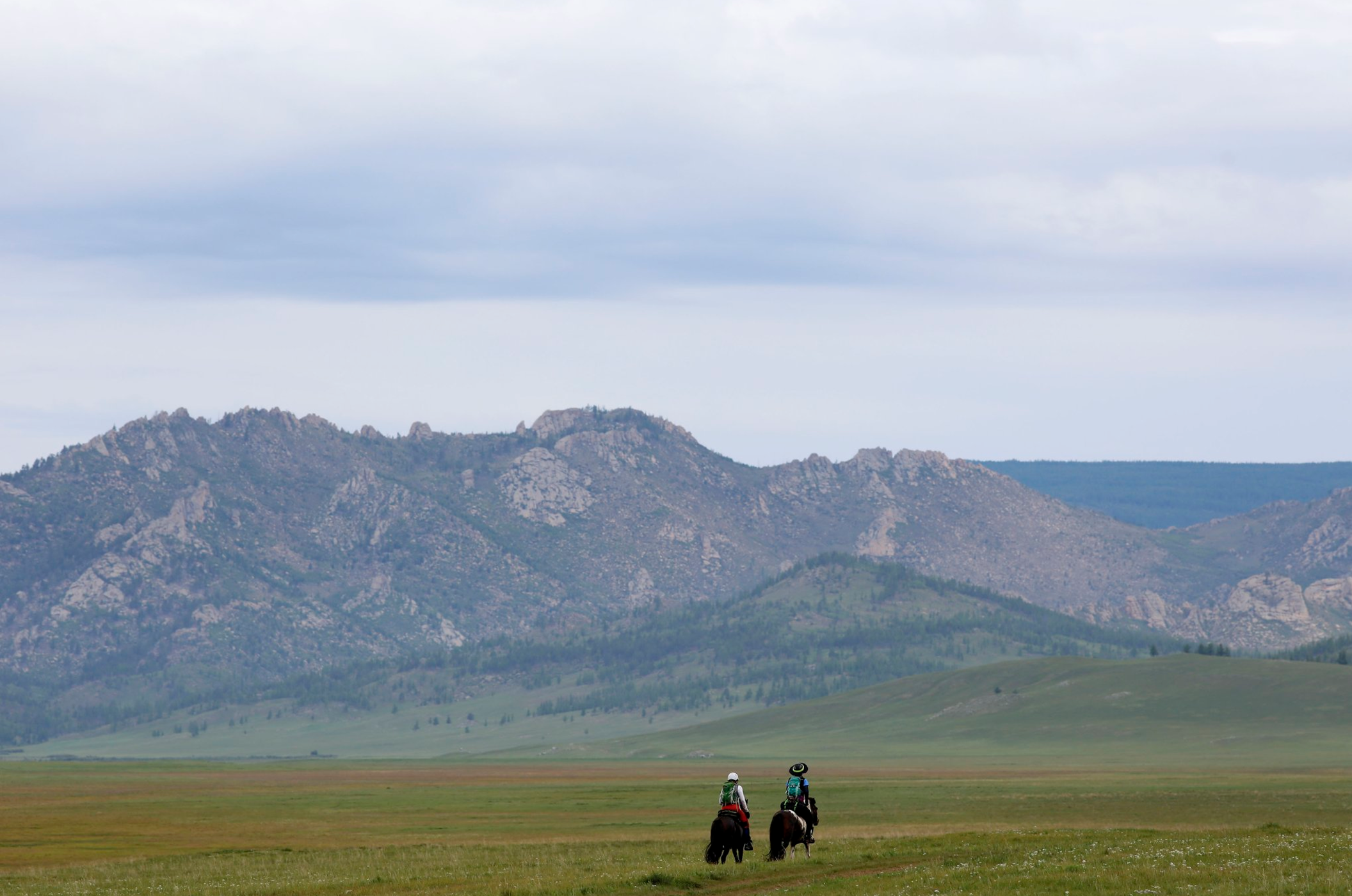 Photo by Julian Hebert/Mongol Derby.
Photo by Julian Hebert/Mongol Derby.
I may not have won the battle against my weaknesses, but I certainly saw them up close. They put up a good fight, but they didn’t stop me. Not because I’m some brave, inspiring, fearless warrior princess, but because I kept putting one foot in front of the other. I think sometimes that’s the bravest thing that any of us can do.
Whatever it was I originally thought I needed to survive the Derby, I was wrong. It was just stuff. Even my sock saddlebag was a placebo by the end of the race. All I really needed was myself and some good people around me.

BTW, they never did find my runaway horse. This is how I like to imagine him now, galloping free on a beach to a Jimmy Buffet soundtrack.
In the western world, we try to avoid discomfort and suffering at all costs. We have that luxury. But maybe we’re doing ourselves a disservice. What are you protecting yourself from? What potentially transformative experiences are you avoiding because you’re worried they might not be comfortable or have a happy ending?
Well, in life, you’re not always going to be comfortable. There are no guaranteed happy endings. And the more you practice embracing the suck, the better you’re going to be able to deal when the genuine hard stuff comes your way and there is no SOS button. When things go belly up, what do you have to work with? What’s down there at the bottom of yourself? What can you endure? Who’s with you, and will you let them help?
Go find your Mongol Derby. Find a challenge that has magical potential but is likely to test you to your core. Do something that makes you feel vulnerable. Get comfortable with being uncomfortable. Give yourself both the opportunity to succeed and permission to fail.
I went to Mongolia in search of a good story, and I got what I came for. What’s the story you want to tell? How far, physically or emotionally, are you willing to go to get it? What’s the worst that could happen? What if?
Many thanks to all my sponsors and supporters throughout this journey. Your belief in me helped me believe in myself.



